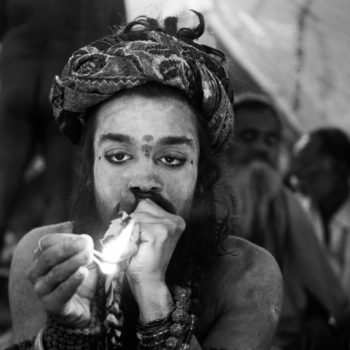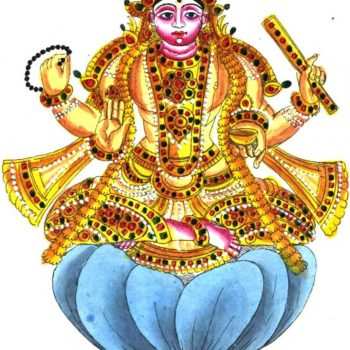Mahākāla is a common deity in Hinduism and Buddhism. With the decline of the Pashupata and other Saiva sects, worship of Mahakala become restricted to the Kali Kula in Hinduism.
Mahā (महत्; “great”) and kāla (काल; “time/death”) literally means One who is beyond Time. It is essentially Shiva but more limitless than the normal conception of Mahadeva. Beyond Mahakala there is nothing, no past, no future, no elements, no forms. Time or Kala kills all living beings. Mahakala is the death of Time itself. Contemplating on Mahakala is an excellent method of going beyond limitations and all ideation and concepts. Being formless, it is believed Mahakala can take any form He wishes.
One of the Tantric texts describe him as having the Power of 10 million black fires of dissolution, dwells in the midst of 8 cremation grounds. He is adorned with 8 skulls, seated on 5 corpses, holds a trident, a drum, a sword and a scythe in his hands. He is adorned with ashes from the cremation ground and surrounded by numbers of loudly shrieking vultures and jackals. The Ujjain temple of Shiva is dedicated to Mahakala and known as Mahakaleshwara.
In Tibetan Buddhism however Mahākāla remains popular as one of the great protector deities or Dharmapalas: those who guard the path of dharma. He is also considered as a meditation deity, or a yidam (yi dam), equivalent to the idea of Istha-devata in Hinduism. Particularly, upasana of four-armed, four-faced Mahakala forms is quite popular in the anuttarayoga-s. Anuttarayoga means unsurpassed Yoga. This is one of the highest class of Tibetan Tantras.
Photo: A religious painting of Mahakala from 15th century Tibet.


